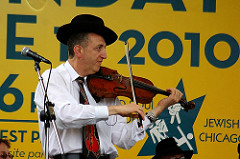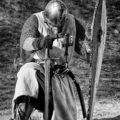If you’ve always had the desire to learn how to play the violin Play the Violin - A Whole Novice's Guide - The violin, also known as a fiddle, is a bowed string instrument. It has four strings that are tuned in perfect fifths. The violin is the smallest and highest pitched member of the string instrument family, which also includes violas and cellos. Although playing the violin can be quite challenging, when mastered, it produces a… , you can definitely do so. While many people believe that it’s best to start at a young age, the truth is that you can learn how to play the violin Violin Exercises For a Masterful Performance - Playing the violin undoubtedly requires exceptional skill, a keen ear for music, and remarkable concentration to enable the violinist to produce the exquisite melodies characteristic of a flawlessly executed violin piece. The sound produced by a violin is distinct, setting it apart from all other instruments in an orchestra, and entirely different from its fellow… at any age.
You can begin by taking private lessons from a professional instructor, but that’s not necessarily required in the beginning. If you have a friend or relative who can play the violin, they can help you get started with the basics. This involves learning how to hold the instrument properly, which is important for several reasons. Holding it incorrectly can lead to discomfort, which takes away from the enjoyment of playing. Moreover, improper posture can cause strain injuries, so it’s essential to get it right from the start. Position your left arm under the body of the violin and hold onto the neck of the violin with your left hand. As you hold it, your fingers should curve over the fingerboard so that your hand and fingers are positioned above the strings. The chin rest should be between your chin and left shoulder. Hold the bow in your right hand, and you’re ready to play.
Once you’ve learned how to hold the violin correctly, you can start learning how to finger the notes on the instrument. Unlike guitars, violins don’t have frets. Instead, violin players essentially play “by ear” until they develop a sense of where each note falls on the fingerboard.
You will initially be taught the four key positions on the violin. The first position is at the end of the fingerboard and produces the lower notes, while the fourth position is closer to your face and produces higher notes. The four strings of the violin are tuned to G, D, A, and E. When you play the strings “open” (without any fingers pressing on them), you will hear these notes. By pressing your fingers on different positions on the strings, you will produce different notes.
Notes on the violin can be played in one of two ways. They can be plucked (played pizzicato) or played by running the bow across the strings gradually and smoothly. Many people start by learning to pluck the strings and progress from there.
In addition to learning how to play the violin, you will also need to learn how to read sheet music How To Read Piano Piece Music Fast - Learning to play the piano and read sheet music doesn't have to be intimidating. You don't need an exceptionally high IQ for this; all you need is perseverance and consistent practice, along with an easy-to-read piano sheet. By following some guidelines, learning can become easier. Here are some tips to help you as you gradually… . If you don’t know how to read music before you start learning to play, you can begin by learning in a simpler manner. This can be done through lessons, having someone knowledgeable in music teach you, or even studying on your own to some extent by searching for tutorials online.
It’s important to know that it takes years of work, dedication, and practice before you become an expert, and that’s perfectly fine. You don’t have to be an expert to have fun playing this amazing instrument. Just start and you’ll see what I mean.
Manuel Marino is a seasoned Senior Producer, Music Composer, and Artist with over a decade of experience. He specializes in branded entertainment across various mediums, including video games, films, and advertising campaigns. With 20+ years as a game music composer, Manuel has worked on numerous platforms, creating diverse orchestral soundtracks. HIRE ME


 Manuel is a passionate, driven, and techsavvy AV technician,
Manuel is a passionate, driven, and techsavvy AV technician, 










